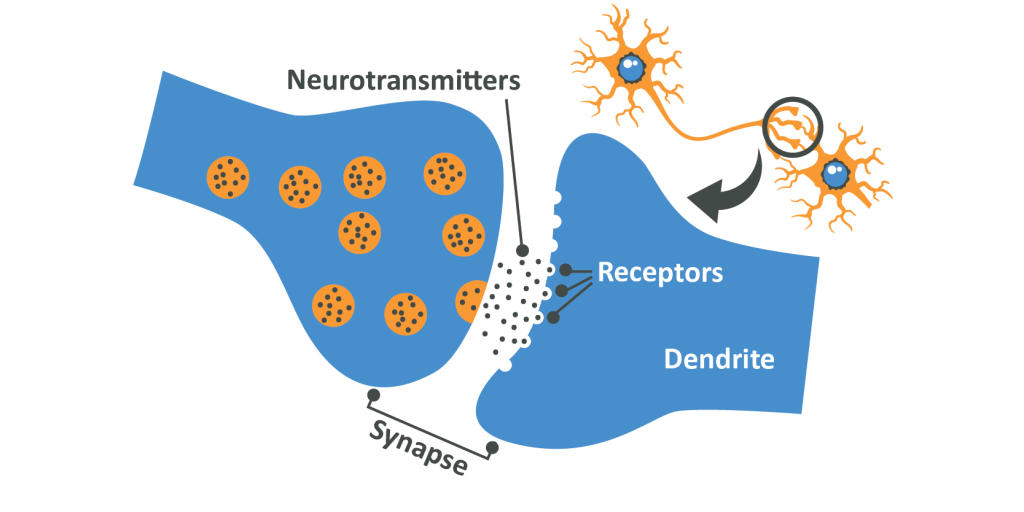What are we measuring?
Within your brain are somewhere around 86 billion specialised cells called neurons, which have a very distinctive shape. Within the cell body is a nucleus, mitochondria, endoplasmic reticulum and all of the other organelles you would expect to find in any cell, but when you look at the structure of the cell body you see some specialised structures which give the neuron certain properties.

From the cell body extends two different kinds of projection, namely dendrites and an axon. The axon extends anywhere from an exceptionally short distance (say, between different neurons) anywhere to up to 15 feet in a giraffe. These exceptionally long, almost in-conceivably thin thread-like projections extend all the way from the brain to various parts of the body to convey information. Your brain communicates via your spinal cord to every area of your body through nerves, which are bundles of axons, almost like humans communicate through a phone-line. A neuron is capable of sending a signal from its cell body down to a certain body part to illicit an effect (movement in somatic muscles, secretion of hormones from glands or even some amount of pain). The dendrites, on the other hand, are able to receive signals from other neurons, which is how you are able to think or perform complex tasks.
Some areas of your brain are responsible for movement, some for smell, some for basic emotions, some for conscious thought and many other areas perform various different tasks; so, these areas need to be able to communicate with each other as well as to the broader body, and they do this in the following way.In module 4 we talked about the potassium/sodium pump in terms of hydration and mineral balance, but it also plays a large role in the sending of signals via your nervous system. These signals are created thanks to a phenomenon known as ‘membrane potential’. The sodium/potassium pump, as you will remember, acts to pump 3 positively charged sodium ions (positive thanks to the fact that they lack one of a stable sodium atoms negatively charged electrons) outside of the cell while pumping 2 positive potassium ions back in. This means that while the cell is in a resting state it has a significantly greater negative charge inside than out, and the opposite is true for the positive charge.
When the nerve receives a signal at one of its dendrites (in a form we’ll explain momentarily), small membrane-bound proteins on the surface called protein channels will open, allowing the positively charged sodium ions to rush in, depolarising the area and reducing the charge across the membrane. This then causes a chain reaction down the dendrite, across the cell body and down the axon to either another neuron or a relevant part of the body. After the signal has passed a section of the cell body the sodium channels are closed and the sodium/potassium pumps get back to work re-creating the polarisation.

Once the signal reaches its destination it meets a problem, between the end of 1 axon and the thing with which it’s trying to communicate, is a tiny gap called a synapse. When the signal reaches here the neuron sending the signal (the presynaptic neuron) secretes signalling molecules called neurotransmitters (of which dopamine is one, which we described in earlier modules). These neurotransmitters cross the gap and bind to receptor sites on the postsynaptic neuron, which then continue the signal.